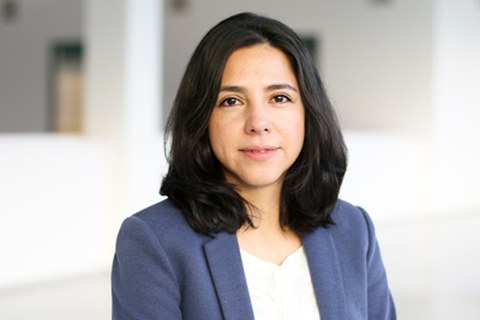Sep 19, 2019
Examining bone dynamics during regeneration and regeneration potential of skin cells

Dr. Tatiana Sandoval Guzmán
The regeneration of the limbs in salamanders is relatively fast and reliable. In contrast, some mammals (including humans) are able to regenerate the most distal part of the finger, while more proximal parts do not regenerate. Why does an injury beyond the nail bed results in only wound healing and scarring, while the fingertip can regenerate? Why do humans have a limited regeneration capability? How can we improve it?
These questions are the focus of the scientific work of Dr. Tatiana Sandoval Guzmán and her research group at the CRTD. With the support of the German Research Foundation (DFG), the group can now study in detail how the bone is formed and remodelled during regeneration. The group received a 36 months grant to finance its project on bone dynamics.
Dr. Tatiana Sandoval Guzmán also studies the regeneration potential of skin. Her latest publication highlights the heterogeneity of cells within the limb skin and their respond to injury. In adult skin, fibroblasts are critical for wound healing, but they will also contribute to form a fibrotic scar. “Understanding the different fibroblast populations could help us direct healing to a non-scaring outcome”, explains Dr. Tatiana Sandoval Guzmán. The scientists used transgenesis to lineage trace a small population of cells in the limb skin. In homeostatic conditions this population was found in discreet numbers, after injury it amplified up to 16 times. More notoriously, after injury these cells contributed to tissues beyond the dermal compartment.
Many studies addressing wound healing are performed in skin from the back, and general principles driving tissue healing have been described from these studies. However, the contribution of local regulatory components remains unexplored. Skin can vary in thickness, number and length of hair follicles and pigmentation. Indeed, skin from the back is much thicker than skin from arms or hands. “We are interested to understand the function of this limb fibroblast population. We believe that addressing wound healing in different experimental paradigms, provides an important advancement to understand skin pathologies such as diabetic and trauma-related injuries, where novel wound therapies could prove useful”, says CRTD research group leader Dr. Tatiana Sandoval Guzmán. The presented study was started during her postdoctoral period in the lab of Elly Tanaka in collaboration with Joshua Currie and has now been published in Biology Open.
Publication: Biology Open “The Prrx1 limb enhancer marks an adult subpopulation of injury-responsive dermal fibroblasts” by Joshua D. Currie, Lidia Grosser, Prayag Murawala, Maritta Schuez, Martin Michel, Elly M. Tanaka, Tatiana Sandoval-Guzmán
